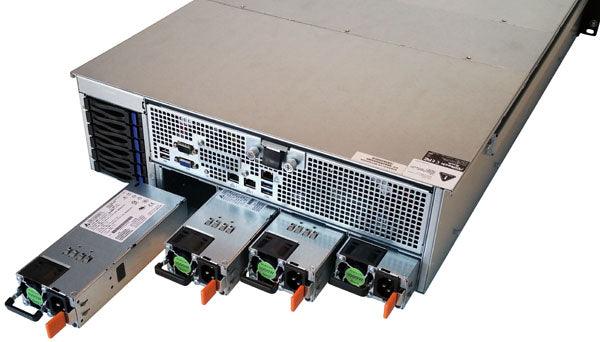When building a server for your organization, there are a number of things that need to be taken into consideration. A power supply is one of the many parts you will require in your server system. Finding the right power supply can be a very confusing task as there are titanium, gold and platinum power supplies, all with different wattages. Bringing it all together can be quite the challenge.
The great news is that there are great resources available to help you find the power supply you need for your server. If you are working with a Dell server you can always refer to Dells user manuals and online tools. If you are using an HPE server don't worry they also have great support available that can be found here.
Server Power Supply Efficiency
Generally speaking, the more efficient a power supply is, the less energy you’ll use overall. If you’re running multiple servers together in a rack, the savings in electricity costs can really add up over the course of a year.
Titanium power supplies are the most efficient option, offering 96% power efficiency. Platinum power supplies are slightly less efficient at 94%. Gold power supplies offer a lower efficiency of 92%.
Essentially, the efficiency of a power supply is calculated in terms of how much AC (or, in some cases, DC) input power is needed in order to produce a given amount of output power. For example, a power supply which requires 200 watts of input power in order to produce 180 watts of output power would be rated at an efficiency of 90% (180/200 = 0.9).
The 20-watt difference between the input and output is lost in the form of heat. Aside from the added expense of the electricity involved in generating this wasted energy, another downside of inefficient power supplies is the fact that this heat has to be accounted for: you’ll need cooling equipment to remove it.
Of course, the efficiency of a power supply isn’t linear or flat when it comes to the supply’s output range. Most power supplies operate at their maximum efficiency when they’re running in the upper ranges of their rate capacity. This means that an 800-watt power supply providing 400 watts of power (50% capacity) will be less efficient than a 500-watt power supply providing that same 400 watts of output power (80% capacity).
Why does this matter? When choosing a power supply, efficiency is an important consideration -- but you have to take into account more than just the efficiency rating of the power supply itself. By accurately estimating the power consumption of your server system, you can choose a power supply that’s correctly sized and will run at optimal efficiency.
In the case of large (enterprise-level) data centers, cumulative energy losses from multiple servers running inefficient power supply configurations can be significant. To get the most accurate measurement possible, it’s often helpful to pre-configure and measure your actual system under load. However, this method can be impractical for many customers as it involved purchasing, configuring, and operating each component of the server system. As a result, smaller customers without the ability to perform such tests can sometimes end up with a power supply that exceeds their wattage needs.
Redundant Power Supplies
Redundant power supplies are used as a backup in the event of failure of the primary supply. Having redundant power supplies in place is essential for ensuring your ability to continue to operate in the event of a failure of the primary power supply.
When it comes to redundant power supplies, every server operates differently. Some will use the primary power supply for 100% of power needs until it fails, at which point they will switch over to the secondary supply. Others will balance their energy needs between the two. It’s also generally possible to configure how you want the server to make use of the two power supplies.

